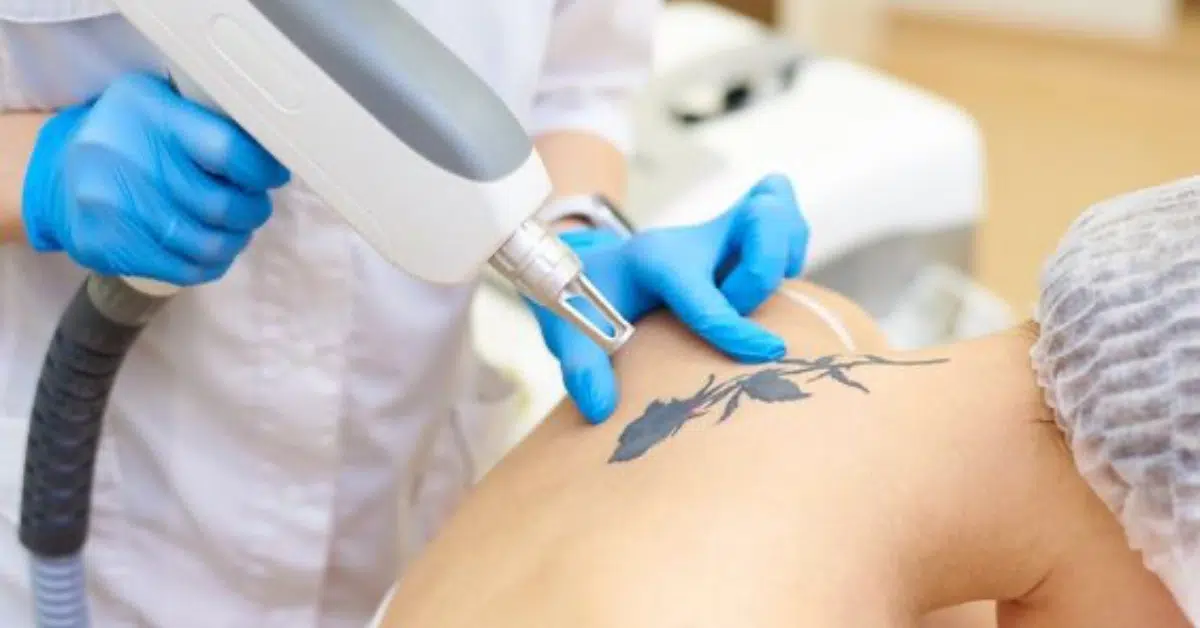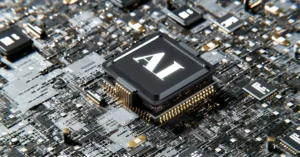In recent years, tattoos have transcended mere body art to become deeply personal statements. Yet, as tastes change or life circumstances evolve, so too does the desire to remove them. The process of tattoo removal, once arduous and often incomplete, has undergone significant advancements, offering new hope to those seeking a clean slate. From innovative laser technologies that target pigments with precision to non-invasive methods promising fewer side effects, the field has expanded dramatically.
This article delves into the evolving landscape of the tattoo removal process, exploring the intersection of technology, personal choice, and the quest for self-expression in an ever-changing world.

Credit to @NAAMA Studios Laser Tattoo Removal | Pinterest
Tattoos as a Long-term Commitment
Tattoos are permanent marks on the body that a tattoo artist makes by injecting ink into the skin’s dermis layer. They symbolize personal stories, beliefs, or aesthetics that might change over time. Thus, what seems significant today may change in the future, making the choice of design and placement crucial.
Additionally, tattoos can influence perceptions in personal, social, and professional contexts, as visible tattoos may carry varying connotations depending on cultural and societal norms. Committing to a tattoo involves careful consideration of its lasting impact on your identity and how it aligns with future aspirations and lifestyle changes.

Source: https://smallbusiness.co.uk/acceptable-discrimination-tattoos-2538919/
Once done, removing the unwanted tattoos can be challenging and often requires painful procedures like laser treatments. But many wonder why people even choose to remove a tattoo.
Why Do People Remove Tattoos?
People choose to remove tattoos for various reasons, often related to changes in personal or professional circumstances. The most common reasons to remove a tattoo are:
- Changing a lifestyle: A lot of people want to remove tattoos due to shifts in lifestyle or beliefs that no longer align with the tattoo’s meaning. Typical examples are tattoos that show affiliation to a group or a gang one no longer aligns.
- Regretting impulsive decisions: It is not uncommon to get a tattoo as a hasty decision but regretting the choice later. You might not like your tattoo anymore, it might have been a joke, or it might have faded over time and lost its aesthetic appeal. Statistics suggest that 1 in 7, or 14%, of adult Americans who sport a tattoo regret getting one.
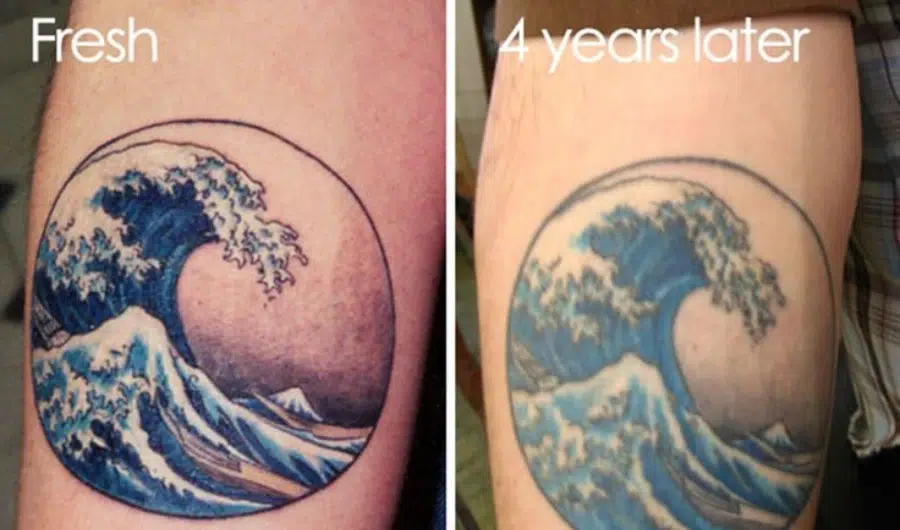
Credit to @rhapsodiccraftcraze | Pinterest
- Strict job policy: Visible tattoos may conflict with workplace policies or career aspirations. Although tattoos are now more acceptable in the workplace, it is up to individual companies to set a tattoo policy. As an entry-level employee, you might be allowed to have a visible tattoo, but as you move up the company ladder, they might be undesirable.
- Regretting relationships: Many individuals want to remove a tattoo to improve self-esteem or to erase reminders of past relationships. Having an ex’s name or a symbol like a wedding ring tattoo on your body can hamper your future relationships.

Credit to @Our Mindful Life | Pinterest
As you grow older, you change and evolve, but your ink stays the same. Sometimes, removal is the only option.
Tattoo Removal Methods In The Past
One of the first tattoos was a drawing of a tiny bull and sheep discovered on an Egyptian mummy. It is a testimony of how far back tattoos go. Likewise, tattoo regret isn’t a modern phenomenon; it’s been present since tattoos started appearing.
Early tattoo removal methods were painful and dangerous, often causing scarring and infections. Here is an overview of what those were:
- Salabrasion is one of the oldest tattoo removal methods. In its foundation, people scrub the skin with salt and salt-based solutions. A salt paste or saline (salt water) causes abrasion and draws out the ink from the dermal layer. After it comes out, it forms a scab, which heals and falls off, bringing with it some ink. This practice was very painful and not so effective.
- Dermabrasion is the oldest and most primitive tattoo removal method. It involves rubbing rough surface objects against the skin to remove skin layers. Like salabrasion, the tattoo removal process is painful, leaving people with open wounds that will need up to 12 weeks to heal completely and fade out.
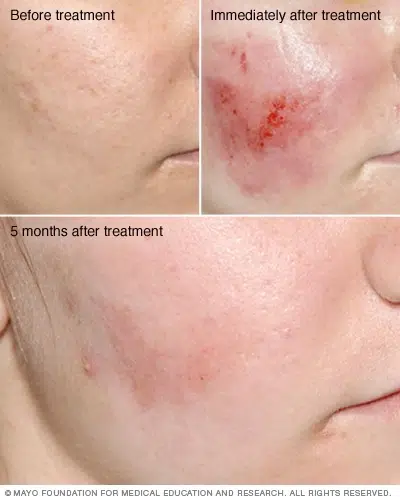
Source: https://www.mayoclinic.org/tests-procedures/dermabrasion/about/pac-20393764
- Skin excision was the most invasive and painful tattoo removal procedure. People used to inflate a balloon underneath the skin to stretch it and then cut the tattoo. Then, they would graph it with the extra skin.
While any traditional method of tattoo removal seems really harsh or painful, you would be surprised to know that they are still used today. Of course, each tattoo removal procedure today is highly adapted and improved.
Modern Types of Tattoo Removal Processes and Methods
Tattoo removal methods have evolved significantly. While most traditional techniques are still used today, the equipment and approaches have been improved to match modern safety and medical professional standards.
The three tested and proven modern tattoo removal procedures are:
- Laser tattoo removal
- Surgical removal
- Dermabrasion
Other tattoo removal methods include:
- Chemical peels
- Tattoo Removal creams
Here is a table with a quick overview of each tattoo removal procedure and the most important things you should know about it.
| Method | Price | Effectiveness | Pain | Scarring | Recovery |
| Laser removal | Depends on Number of sessions but can be high | Highly effective | Medium amounts of pain | Low risks | Depends on number of sessions |
| Surgical excision | Medium to low | 100% effective | It can be excruciating | It almost always leaves scars | At least two weeks |
| Dermabrasion | Medium to low | High effectiveness | It can be excruciating | Leaves scars | 2-3 weeks |
| Chemical Peel | Low | Slightly effective | Medium to low pain | Only some scars | 5-7 days |
| Removal Creams | Low | Rarely effective | Low to no pain | No scars | Up to 7 days |
Let’s explain each procedure more thoroughly.
Laser Tattoo Removal
Dr. Leon Goldman carried out the first laser tattoo removal session in 1967 to remove a client’s body art. In the 1980s, specialists began using CO2 lasers to remove tattoos, but that technology was still in its infancy and resulted in scaring permanent pigmentation issues.
Short-pulsed width lasers and the theory of selective photothermolysis brought significant improvements during the 1990s. New protocols, training, and laser technology in the last years have raised this to the next level.
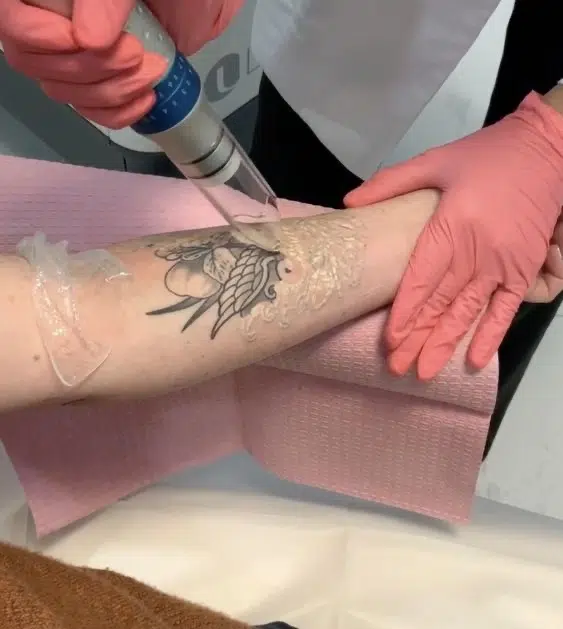
Credit to @Essential Aesthetics Inc. | Pinterest
As a result, laser tattoo removal is considered the most successful and cost-effective way to remove tattoos today. The Q-switched laser creates a pulse of energy that targets and heats the ink in your skin to dissolve it. The heat fragments the ink into smaller particles, which your body’s immune system naturally processes and removes.
Due to this work principle of laser tattoo removal, it is usually impossible to remove a tattoo in a single laser session, like with surgical excision. The laser wavelengths significantly lighten or fade tattoos over time, but it usually takes 7-10 sessions to remove the tattoo completely. The length of the procedure depends on the size of the tattoo, location, or skin color.
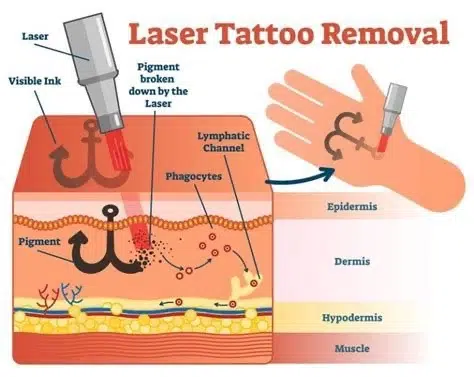
Credit to @Michelle Rooker | Pinterest
Does Laser Tattoo Removal Hurt?
Each person has a unique pain threshold, which you already know if you decide to go for a tattoo. The same thing applies to laser tattoo removal. Nonetheless, most clients agree that laser removal is somewhat painful.
Based on personal experiences, clients consider that the pain of a laser is comparable to the pain of a bad sunburn. For the most, the laser pulses feel like a rubber band snapping against your skin. The amount of pain can also be based on the skill and experience of the person doing the removal, your emotions (negative emotions are related to more pain), and the tattoo location.

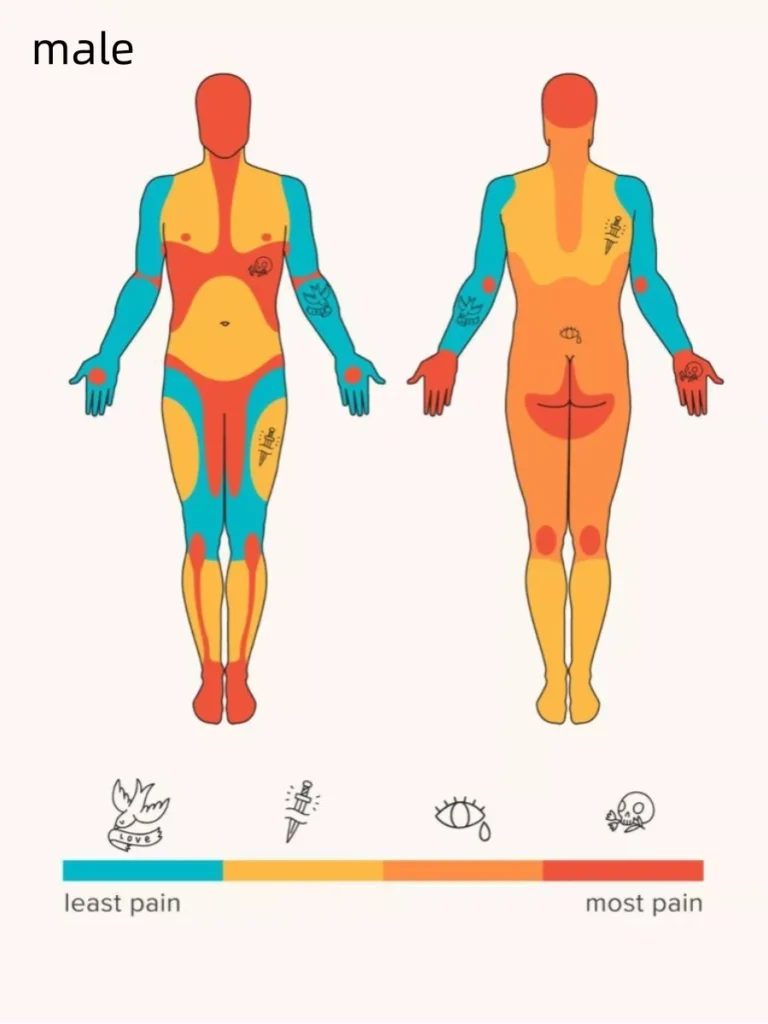
Source: Healthline
While laser tattoo removal can hurt, chances are it won’t hurt as much as getting the tattoo did. Topical skin-numbing medications or a local anesthetic can reduce the pain, so in general, laser tattoo removal is tolerated very well.
Although advanced, lasers also create wounds. That’s why you will have to apply antibacterial ointment to your skin for several days. The ointment will help heal your skin and reduce the risk of infection. Change the wound dressing each time you apply the ointment. Typically, healing is complete around five days after the procedure, which is much faster compared to other tattoo removal methods.
How Effective Are Laser Treatments?
Experts recommend laser tattoo removal as the most effective method today. Success rates are generally high, and complete removal is achieved in many cases.
Darker ink colors like black and blue respond best to laser treatment because they absorb more light energy. Meanwhile, lighter ink colors such as yellow and green can be more challenging to remove due to their absorption spectrums and may require multiple sessions for satisfactory results.
The success of laser removal also depends on the skill and experience of the technician and the type of laser used. On average, 7-10 sessions are needed to achieve the desired result. But keep in mind that in some cases, lasers won’t completely remove a tattoo.
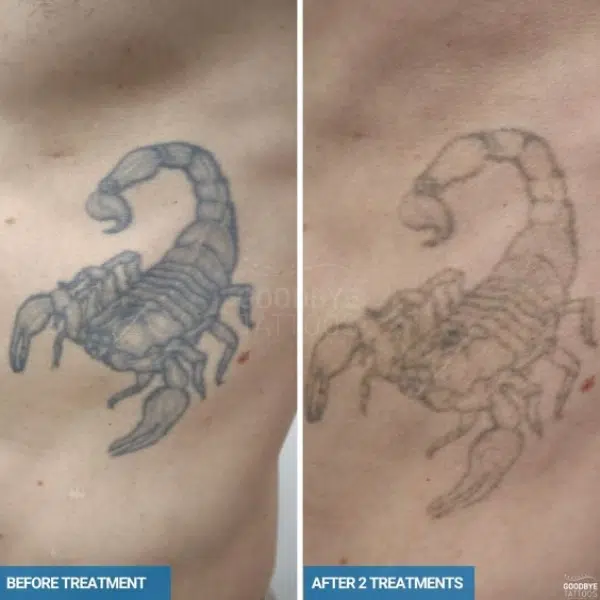
Credit to @Goodbye Tattoos Laser Tattoo Removal | Pinterest
Side Effects of Laser Tattoo Removal
While a laser treatment session can significantly reduce the visibility and tattoo intensity, laser therapy is not without its downsides. Risks and side effects of laser are:
- Pain and discomfort: Laser removal can be more or less painful, depending on your pain tolerance.
- Allergic reaction: In rare cases, laser treatment can loosen a chemical inside the tattoo ink that can cause an allergic reaction. Red inks are more likely to cause these allergies, so an allergy medication might be a part of your removal process.
- Scarring: There is a risk of permanent scarring, mainly if the skin doesn’t heal properly.
- Skin Discoloration: Hypopigmentation (lightening the skin color) or hyperpigmentation (darkening the skin) can occur, especially in individuals with darker skin tones.
- Skin Infections: Failing to follow the post-treatment care instructions can cause infection at the treatment site.
- Blistering and Crusting: The treated area may blister, crust, or scab over, which is expected during the healing process. However, this occurrence can also permanently change the skin texture.
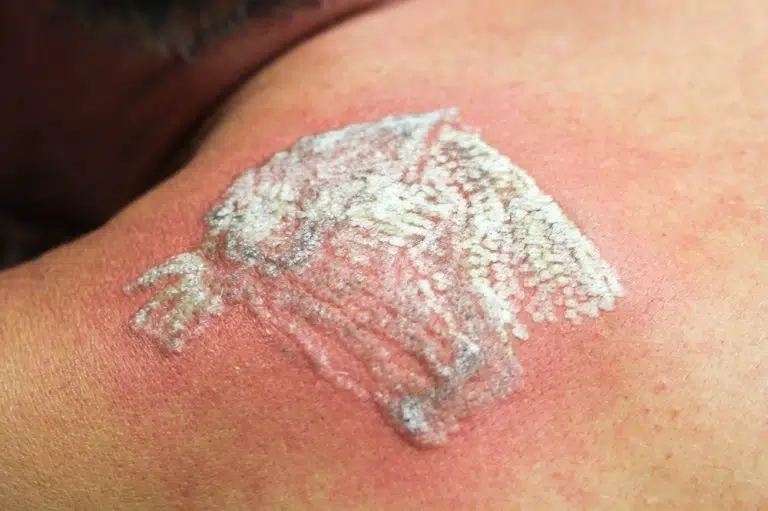
Source: https://londonlaser.ca/side-effects-of-tattoo-removal/
Surgical Excision Tattoo Removal Procedure
Skin excision evolved from a traditional method to a surgical removal with the highest chances of success. This simple but highly inconvenient method involves surgically removing the skin that contains the tattoo. The tattoo remains on the removed skin, and the surrounding skin is then stitched and left to heal.
Since this is a highly invasive and generally painful tattoo removal procedure, doctors use local, regional, or even general anesthesia. Professionals choose the type of anesthesia based on the size and optimal tattoo removal.
Since cutting out the tattooed skin and stitching can create scarring, many experts recommend surgical removal only for small tattoos. Removing tattoos from large areas can be highly painful and requires using skin donors or skin from other body parts to cover it.
Although surgical excision is the most effective tattoo removal procedure, it is also highly invasive, painful, and harsh. That’s why people today often choose less invasive procedures.
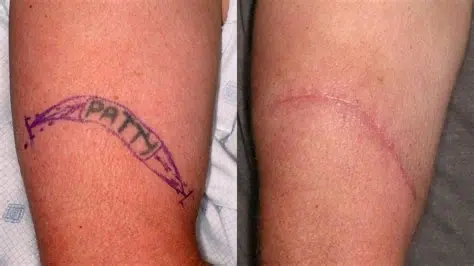
Tattoo excision surgery. Source: https://canel.my.id/
Risks and Side-effects of Skin Excision
Skin excision is related to various risks and side effects, such as:
- Scarring: Surgical removal almost always results in some level of scarring, which can be significant depending on the size of the tattoo.
- Skin infection: As with any surgical procedure, there is a risk of skin irritation or infection.
- Pain and Discomfort: There will be pain associated with the procedure and during the healing process.
- Long Recovery Time: Recovery can take longer, requiring careful wound care to avoid complications.
Dermabrasion Tattoo Removal
Dermabrasion also evolved from a traditional tattoo removal work into a surgical method. This method involves using a medical grinding tool. A sanding device with abrasive consumables removes the layers of the skin that contain the ink particles.
As the high-speed rotating abrasive device sands off the skin layers, it can cause pain and discomfort. That’s why this method is not suitable for people with susceptible skin or skin conditions like eczema. You can also experience bleeding, bruising, and changes in your skin pigment, especially if you are taking blood thinners.
A clinician uses a numbing cream to reduce the pain. However, larger tattoos can require regional or even a general anesthetic. Like surgical excision, this tattoo removal method creates an open wound that needs proper care.
The treated area will likely feel painful and raw for several days, and full recovery can take 2 to 3 weeks. The recovery requires cleaning the wound with soap and water, using antibiotic ointment, and covering the wound with a dressing.
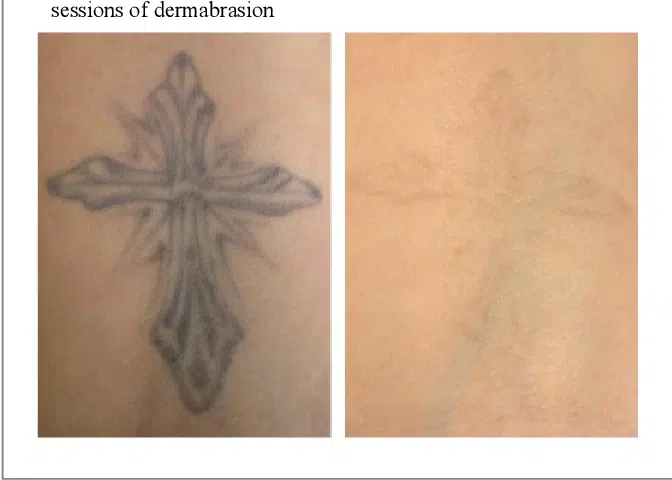
Figure showing the tattoo on the back of a patient after 3 sessions of dermabrasion
Is Dermabrasion Effective In Tattoo Removal?
Like surgical skin removal, dermabrasion is an effective tattoo removal procedure. However, it can last longer or even take several sessions to complete. The length of the procedure depends on the size and color of your tattoo. It can take hours or several sessions to remove complex, colorful, and larger tattoos.
That’s why most people turn to laser tattoo removal, which many consider the most modern and standard technique today. However, there are less invasive but less effective methods or alternatives that people go for today.
Risk and Side Effects of Dermabrasion Tattoo Removal
Sanding the top layers of your skin with an abrasive tool creates a lot of pain and an open wound. Therefore, the common side effects of dermabrasion include:
- Pain and discomfort: The procedure can be quite painful and cause discomfort for extended periods.
- Scarring: Dermabrasion can produce significant scarring, so it requires trained and professional physicians
- Skin texture changes. After healing, the skin may appear rough or uneven. People with darker skin may also be at a greater risk of skin pigment changes.
- Skin infection: The procedure creates an open wound that is prone to skin infections if mistreated.
Chemical Peel Tattoo Removal
A chemical peel is considered an alternative or other tattoo removal method, as many consider it less effective than the methods we mentioned above. Modern chemical peeling relies on Trichloroacetic acid (TCA) or Phenol.
TCA is a mild acid that is applied to the skin, targeting the outer layers. Phenol is a much stronger chemical and must be applied by a professional in a clinical setting in order to avoid complications.
Regardless of the acid, the agents resurface the skin. The chemical peel penetrates the top layer of skin, but in some cases, it can reach the middle layers where tattoo ink particles reside. As a result, a single application can remove a small amount of tattoo ink.
Is Chemical Peel Effective In Tattoo Removal?
In most cases, chemical peels are not as effective as other tattoo removal methods. Only small amounts of acid reach the middle layer, so in the best case, the tattoo will only slightly fade.
However, some people use chemical peels before undergoing laser treatments. Slightly fading the tattoo with a chemical peel can shorten the laser removal process for a couple of sessions, so you can also save money. However, keep in mind that chemical peels can also burn skin and create wounds, scarring, and loss of pigmentation.
Tattoo Removal Creams
People who are afraid of pain or possible complications of more invasive tattoo removal processes usually choose home treatment solutions. Home treatment or DIY kits are available in the form of tattoo removal creams.
While tattoo creams are the least painful and cheapest option for tattoo removal, they are also the least effective. In most cases, creams cannot penetrate thicker layers of skin where tattoo inks reside, so the chances of removing tattoos are minimal.
Keep in mind that, aside from some personal experiences, there is no scientific proof that these creams work. Additionally, the FDA does not approve tattoo removal creams or any kind of do-it-yourself tattoo removal kits.

Tattoo Removal Cream Before and After Results. Source: https://removery.com/blog/tattoo-removal-creams/
General Considerations Regarding Tattoo Removal
Regardless of the tattoo removal method you choose, there are several things you should keep in mind. Before you decide on tattoo removal, you should remember that:
- Removal Lasts Multiple Sessions: Most tattoo removal methods require multiple sessions. Treating the same area multiple times increases the cumulative risk of side effects, can be more painful, and creates intensive scarring.
- It can be expensive: Tattoo removal can be costly, and the cost increases with the number of sessions required.
- Removal is not always successful: You cannot completely remove all tattoos. The success of the tattoo removal process depends on various factors. We will talk further in the text, so some tattoos may only fade partially.
“So, think before you ink!”
What Factors Affect The Success Rate Of Tattoo Removal?
As noted, tattoo removal is not 100% guaranteed to succeed. Yes, there are some radical measures, such as surgical excision, but due to complexity and associated risks, many turn to less invasive procedures. In that case, the outcome of tattoo removal will depend on:
- Tattoo Characteristics: Size, age (older tattoos might be fading and more easily removed compared to newer tattoos, while new tattoo ink might not have “set in” yet and could respond to treatment better), depth, and ink colors. Each of these can affect how quickly, easily, or possibly tattoo fades.
- Skin Type: Lighter skin tones generally respond better to treatments, while darker skin tones may be more prone to pigmentation changes or scarring. Lighter skin only absorbs tiny bits of laser light, so most of the laser energy dissolves the tattoo pigment.
- Location: Tattoos closer to the heart and lymphatic system may be removed faster since blood circulation is faster near the heart. Removing ink from the neck, chest, shoulders, upper back, and upper arms happens faster than removing the tattoos on the feet, legs, and hands.
- Technician Expertise: Skill and experience in administering the chosen removal method can significantly affect outcomes. An experienced dermatologist who specializes in cosmetic procedures can significantly reduce the risk of complications such as scarring or incomplete removal.

7 Treatments of Laser Tattoo Removal. Credit to @Inya Cosmetic Skin Clinic | Pinterest
How To Speed Up The Removal Process
Similar to how we can speed up healing a tattoo, there are a few strategies you can consider to potentially expedite the process of removing the unwanted tattoo:
- Follow aftercare instructions: Proper aftercare is crucial for effective and faster healing. Follow your practitioner’s instructions, which may include keeping the area clean and dry, avoiding sun exposure, and applying prescribed ointments or creams.
- Stay hydrated: Drinking plenty of water helps your body flush out the broken-down ink particles. Staying hydrated keeps your skin healthy, which can aid the wound healing process.
- Maintain a healthy lifestyle: A balanced diet, regular exercise, and not smoking can improve your skin’s health and enhance both the removal and healing process.
- Avoid sun exposure: Protecting the treated area from the sun can reduce the risk of complications and promote faster healing. Technicians don’t treat burned skin, and tanned skin makes treatment sessions less effective.
- Allow adequate healing time between sessions: Give your skin enough time to heal between laser sessions. Rushing the process by having a tattoo removed sessions too close can lead to skin damage and complications.
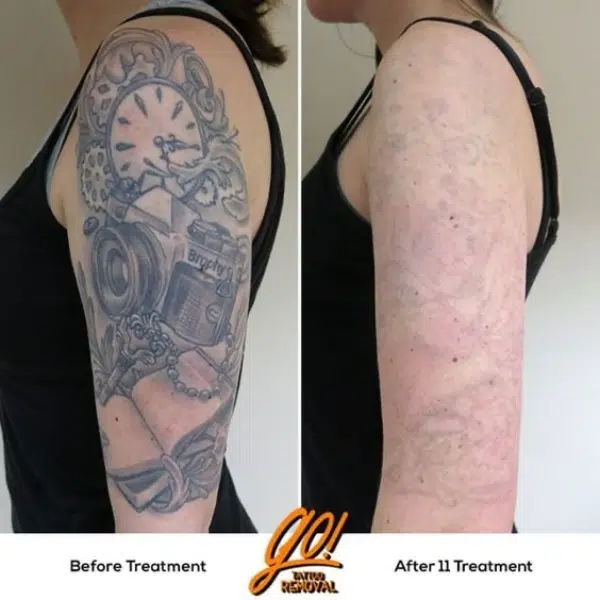
Source: gotattooremoval.com
We Change
In conclusion, tattoo removal represents a complex intersection of personal choice, societal norms, and evolving self-perception. As individuals increasingly view tattoos as expressions subject to change over time, the demand for removal services continues to grow.
Factors such as career advancement, shifting cultural perceptions, and personal growth all influence this decision. While technological advancements have made tattoo removal safer and more effective, the process remains a poignant reminder of the enduring significance we attach to our outward appearances and personal narratives.
If you feel like modern tattoo removal methods are painful or too harsh, you can always ask tattoo artists for a cover-up tattoo. While covering the tattoos won’t remove the ink particles from your skin, you’ll at least get the permanent makeup.
